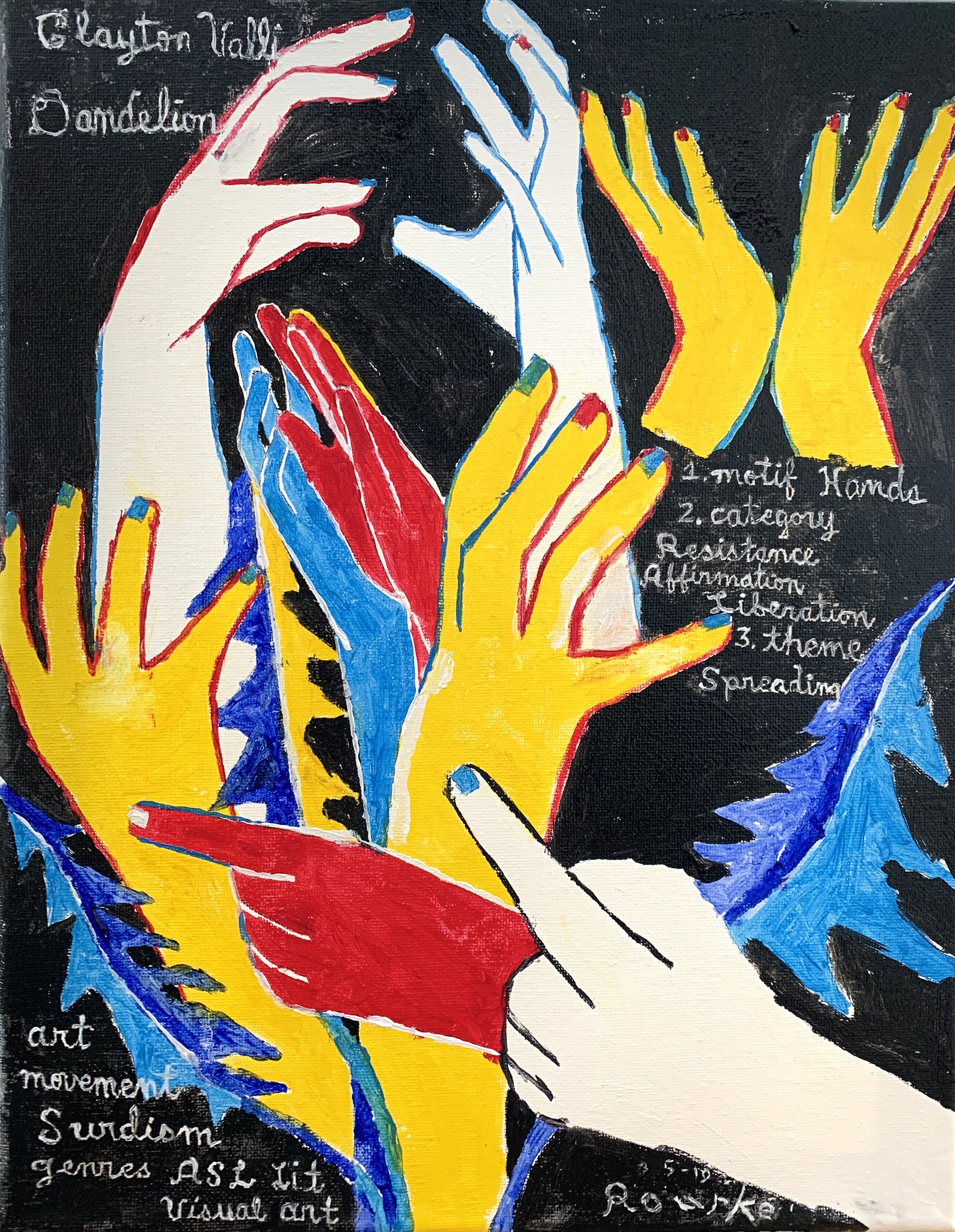This painting shows a “botanical print” or a “scientific illustration” of a dandelion with leaf, bud, flower and a mature seed head. In replace of that, the painting shows an identification of Clayton Valli’s “Dandelion”* in American Sign Language Literature as in ASL LIT and De’VIA visual art, with his handshapes and movement of a dandelion. The actual name for a dandelion is Taraxacum officinale, as in “Clayton Valli Dandelion” in my own vision. To replace the concept of a leaf, bud, flower and a mature seed head, it is as:
- motif HAND
- category RESISTANCE, AFFIRMATION and LIBERATION
- theme SPREADING
- Art movement SURDISM, genres- ASL LIT and Visual art.

Identification of a Dandelion 11 inch by 14 inch oil on canvas
The story behind Valli’s Dandelion: it started as an affirmation category under De’VIA art movement on how Valli performed the handshape flower as to grow, becomes a bud, and grows to be a flower, until it matures to a white seed head. Then comes the resistance category, a lawn mower, mows the dandelions away, the white seeds spread all over becomes a liberation category. This is to refer that American Sign Language continues to re-grow and spread everywhere.
Editor’s note:
Although we are not able to reprint it here, Raymond Luczak’s English translation of Clayton Valli’s ASL poem can be found in John Lee Clark’s Deaf American Poetry (Gallaudet University Press, 2009).
About the Artist
Nancy Rourke (name sign, N3) is an internationally-known Deaf artist and activist. She is also a full-time professional artist, she frequently does artist-in-residencies at Deaf schools and promotes De’VIA and Surdism through art workshops in community settings. A book about her work, Nancy Rourke: Deaf Artist Series (2014) is available from Empyreal Press. Originally from San Diego, California, she now makes her home in Loveland, Colorado.